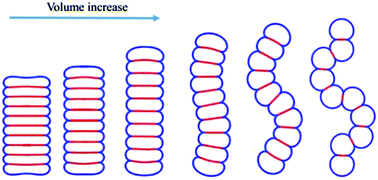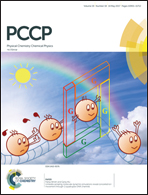Structure–property relationships of cell clusters in biotissues: 2D analysis†
Abstract
Gaining insight into the relationships between the self-organized cell structures and the properties of biotissues is helpful for revealing the function of biomaterials and its designing principle. However, the traditionally used random foam model neglects several important details of the frameworks of cell clusters resulting in incomplete conclusions. Herein, we use a more complete model, the cell adhesion model, to investigate the mechanical and morphological properties of the two-dimensional (2D) dry cell foams. Since these 2D structures are formed by cell adhesion, the system can reach equilibrium through minimizing free energy. Under the equilibrium conditions without volume constraint, shape equations for highly symmetrical structures are derived, and the analytical results of the corresponding mechanical parameters, such as the Young's modulus, bulk modulus and failure strength, are obtained. Moreover, with volume constraint, numerical simulation method is applied to study the complex shapes and obtain several stable multicellular structures. Symmetry breaking caused by the volume change is also observed. Moreover, typical periodic shapes and the corresponding phase transformations are also explored. Our study provides a new potential method to bridge the microstructure and macro-mechanical parameters of biotissues. The results are also useful for understanding the formation mechanism of biotissue structures.



 Please wait while we load your content...
Please wait while we load your content...